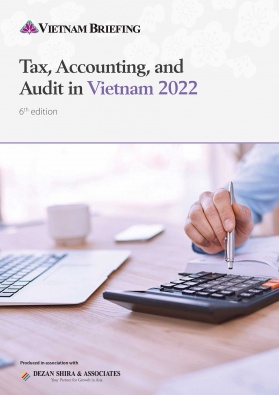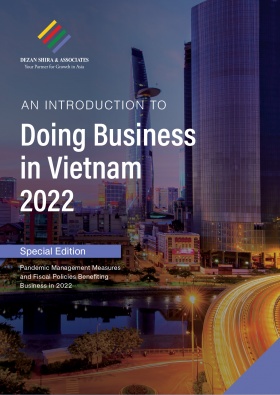Challenges Ahead but Vietnam’s Economy Remains on Fast-track
Prime Minister Pham Minh Chinh reaffirmed that the Vietnam’s economy would exceed expectations this year with an increase in GDP of 8 percent, in a speech at the National Assembly last month.
This is a bold claim given Vietnam’s GDP suffered significantly due to pandemic induced lockdowns just last year.
However, it’s no surprise with Vietnam one of the few countries to record positive economic growth during the pandemic, growing by 2.6 percent in 2021.
So what is keeping Vietnam’s economy humming along and its growth numbers positive?
There are three key factors: infrastructure investment, its trade environment, and competitive wages.
Vietnam is investing in infrastructure
Vietnam spends around 6 percent of its GDP on infrastructure. This is among the highest in the ASEAN region.Among that spending are some big ticket items: the ambitious 1,800 km HCMC–Hanoi highway; the Long Thanh International Airport, which will eventually replace HCMC’s overly congested Tan Son Nhat; metro projects in Hanoi and HCMC, as well as thermal and waste to energy power plants.
But despite these positive signs, Vietnam’s infrastructure falls short.
Many factories, for example, remain labor dependent rather than using technology to automate processes.
However, the government is committed to changing this and has announced incentives for hi-tech industries. It has also banned the sale of used machinery more than 10 years old.
Vietnam is an active participant in global trade
Over the past few years, Vietnam has been active in signing bilateral trade agreements with countries around the world.
Its membership in the Association of Southeast Asian Nations (ASEAN) also makes it a party to several FTAs that the regional bloc has signed.
The standard of product quality, manufacturing, and employee rights guaranteed in these agreements will allow Vietnam to become a manufacturing hub and expand its export base.
The EU-Vietnam free trade agreement (EVFTA), for example, has boosted Vietnam’s exports despite the pandemic.
In 2021, the UK-Vietnam free trade agreement (UKVFTA) helped boost trade between Vietnam and the UK reaching close to US$6.6 billion.
Similar increases were also noted with the Comprehensive and Progressive Agreement for Trans-Pacific Partnership (CPTPP) with exports to Canada and Mexico.
Vietnam’s business environment is open, and the government has provided investor friendly policies aimed at attracting investment and socio-economic development. These are important pull factors for investors looking to invest in Vietnam. This has been made easier through Vietnam’s increasing number of FTAs.
Wages in Vietnam remain competitive
One of Vietnam’s biggest advantages is its competitive wages. China is known to dominate the manufacturing industry but with wages rising, many businesses have already moved operations to maintain margins in low-cost manufacturing.
While Vietnam still needs to develop a skilled labor force, it has a young, dynamic workforce that is ready to fill the gap. Its young labor force also comes at a relatively lower cost. More than 40 percent of Vietnamese university graduates major in science and engineering and Vietnam is among the top 10 countries with the most engineering graduates.
As Vietnam sees its economy grow, its wages will rise. It will thus have to maintain a balance between inflation, wage levels, and productivity to avoid disrupting the overall labor market. Low labor costs ultimately are not sustainable in the long-term and the focus will have to be on developing Vietnam’s service industry, high-tech industries, and domestic consumption.
Fuel price increases and inflation are a challenge
Nevertheless, there are also signs that there will be bigger challenges.
Just recently fuel shortages were reported in HCMC and the surrounding southern provinces. This eventually spread to the capital Hanoi.
The situation only improved when the government raised petrol prices but, while the situation is better, it still hasn’t fully recovered.
In addition, Vietnam’s economy is facing headwinds due to slowing demand, rising inflation, and geopolitical circumstances.
S&P Global’s Purchasing Managers’ Index for Vietnam, which measures manufacturing activity, fell to 50.6 in October from 52.5 in September, the lowest since October 2021. A reading of 50 or more indicates manufacturing expansion.
However, while the Vietnamese dong has lost 9.1 percent of its value against the US dollar since the beginning of the year, its depreciation has been lower compared to other countries.
Furthermore, the central bank is expected to raise interest rates to address inflation.
Vietnam’s outlook: Stable growth despite challenges
Despite challenges, Vietnam’s long-term growth remains stable and there are enough push factors to encourage manufacturing businesses to relocate.
Vietnam’s FDI figures look healthy–it received US$17.5 billion in the first 10 months of the year, up 15 percent year on year.
Inbound FDI is also driving economic growth due to Vietnam’s trade environment and labor, according to the European Chamber of Commerce. This is despite factories going idle due to reduced demand in western markets ranging from textiles and shoes to furniture.
But, even while geopolitical tensions persist, Vietnam’s economic prospects are promising. Investors interested in the market are strongly advised to do their due diligence to ensure they are prepared to meet challenges. In the short term costs are likely to increase, but investors that play the long game stand to reap big rewards.
About Us
Vietnam Briefing is published by Asia Briefing, a subsidiary of Dezan Shira & Associates. We produce material for foreign investors throughout Eurasia, including ASEAN, China, India, Indonesia, Russia & the Silk Road. For editorial matters please contact us here and for a complimentary subscription to our products, please click here.
Dezan Shira & Associates provide business intelligence, due diligence, legal, tax and advisory services throughout the Vietnam and the Asian region. We maintain offices in Hanoi and Ho Chi Minh City, as well as throughout China, South-East Asia, India, and Russia. For assistance with investments into Vietnam please contact us at vietnam@dezshira.com or visit us at www.dezshira.com
- Previous Article COP27: Vietnam’s Net Zero Commitment One Year On
- Next Article E-Mobility, Green Financing on Show at Eurocham Green Economy Forum and Exhibition









